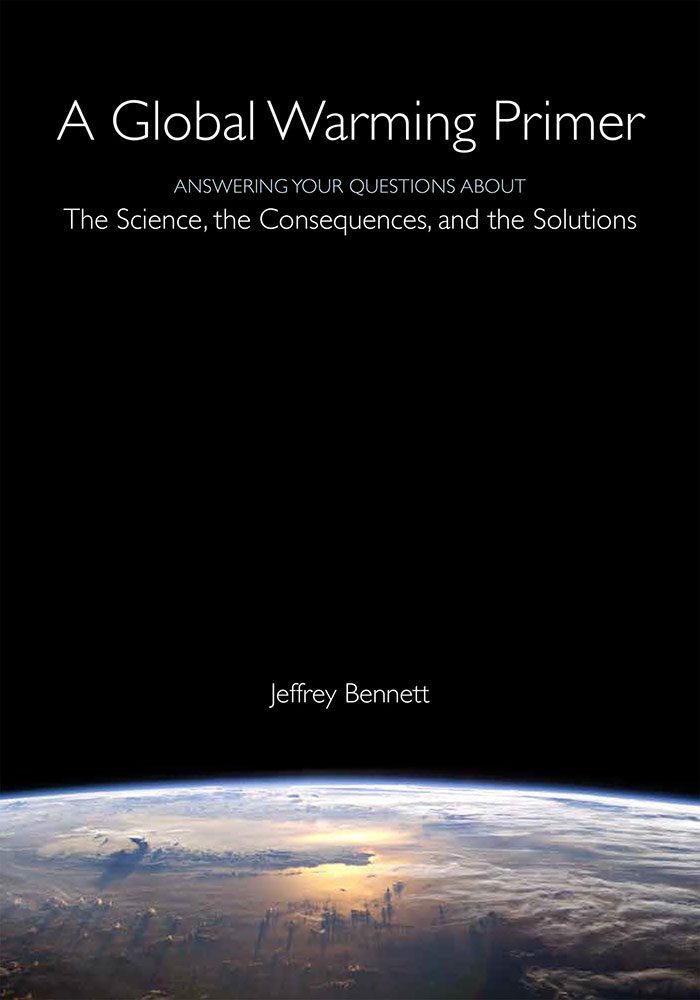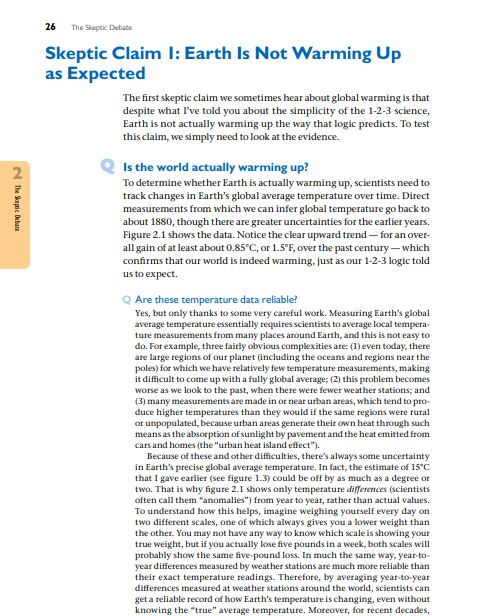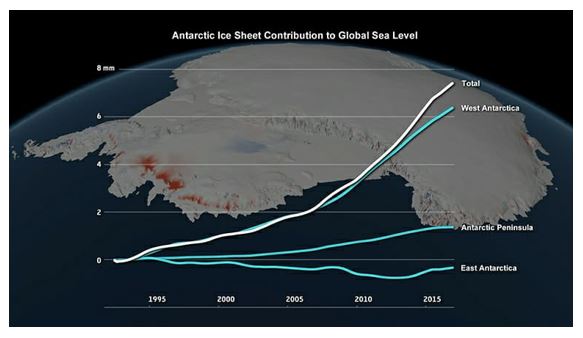Book Review: A Global Warming Primer, by Jeffrey Bennett
Our knowledge of how and why the climate is changing comes from many different scientific fields, ranging from the physics of how greenhouse gases interact with infrared radiation, to the chemistry and biology of how carbon dioxide cycles between lifeforms, rocks and ocean waters, to the geology of volcanoes and Earth's past ice ages. Even astronomy comes into play because of slow changes in the Earth's orbit and tilt which can cause the climate to change. All of this (and much, much more) may be intimidating to some folks, and the topic can be even more off-putting when you add in the political "debate" surrounding global warming.
 What to do? One approach is to give folks just enough information about the science to give them a clear understanding of climate change. Jeffrey Bennett's latest book, A Global Warming Primer, does just that. Dr. Bennett has written science books for every age group, from children's books to college textbooks. His new primer is written for anyone who wants to learn about the basic facts of global warming. The goal is to give readers a "big picture" overview of the science without getting bogged down by endless details.
What to do? One approach is to give folks just enough information about the science to give them a clear understanding of climate change. Jeffrey Bennett's latest book, A Global Warming Primer, does just that. Dr. Bennett has written science books for every age group, from children's books to college textbooks. His new primer is written for anyone who wants to learn about the basic facts of global warming. The goal is to give readers a "big picture" overview of the science without getting bogged down by endless details.
Bennett achieves his goal using a helpful Q&A format, which supplements his main text, throughout the book. An expanded "Detailed Table of Contents" lists all of these questions, making it easy for readers to simply look for answers to their own similar questions. This style makes the book feel "more like a personal discussion", just as Bennett intended. This format, in some ways, mirrors Skeptical Science's taxonomy of climate myths and rebuttals.
Another useful format choice is his use of two different font sizes to denote two different levels of complexity in his descriptions of the science. The larger ("normal") font is "for general text...and the big picture ideas that should be of interest to all readers". Bennett uses smaller font for more detailed discussion of the science. If readers want to just focus on the "big picture" overview they can skip over the small font sections as they read along.

Image of sample page (p. 26) showing different fonts, and Q&A formats
As for the substance of the book, Bennett's language is simple, direct and gives clear descriptions of the science of global warming. The first chapter, "The Basic Science--Easy as 1-2-3", cuts right to the chase. He describes two simple facts which form the basis of our understanding about climate: 1.) "Carbon dioxide makes planets warmer", and 2.) "Human activity is adding carbon dioxide to the atmosphere". He fully explains how we know these two facts are true and then moves on to the inevitable conclusion: "We should expect the rising carbon dioxide concentration to warm our planet, with the warming becoming more severe as we add more carbon dioxide".
With that firm foundation down, he moves on to explore many of the "skeptic" arguments used to throw doubt on our understanding of climate science. This chapter simply adds to the wealth of information which supports the conclusions of chapter one.
Another chapter outlines the likely consequences of global warming if left unchecked. And the next chapter offers solutions we can use to counter global warming: "technologies that can offer us replacements for the fossil fuels that cause global warming".
A complaint about Bennett's primer is a lack of in-depth references. But, for a general audience, a book festooned with footnotes and a massive reference section at the end of the book might be part of why some people find science to be intimidating. He does offer a list of resources for those who want to learn more about the subject.
One other section that could have been more clear is the section dealing with a fairly recent paper from 2015 by Zwally et al, which seemed to show that ice mass gains in East Antarctica outweighed the ice mass losses from West Antarctica. This is one of Bennett's "smaller font" sections dealing with one of the many fine details of the more complex science. When Bennett wrote his book, in early 2016, there were already some "corrections" made to the Zwally study, as Bennett notes: "scientists are actively debating the validity of the results". He then goes on to explain the different methods used by scientists, including Zwally, to estimate how much mass the great ice sheets in Antarctica are gaining or losing. He does a fairly good job of explaining why Zwally's methods might not be as accurate as the other methods. Then he puts the study into the the larger context of overall global ice melt to show that, even if Zwally were true, global warming continues and, on net, ice continues to melt.

Antarctic Ice Sheet Mass Losses from IMBIE 2018
Since Bennett's Primer was published there have been other studies which have further shown that the Zwally study is an outlier in Antarctic research. Most recently, the results from the IMBIE Team from 2018 show that Antarctic ice sheet mass losses are accelerating, tripling their contribution to global sea level rise since 2012 (see figure above). Still, Bennett's treatment of this complex topic shows that he doesn't shy away from "controversial" issues, and he clearly explains them. He also uses this topic as an example of how science works and advances, one study at a time: "This case is a great illustration of the way that science progresses through careful study in which results are checked and rechecked (and repeated and revised if necessary)". And finally, he reminds the reader of the "big picture" and puts the Zwally study into the larger context:
It will take time for the details of this particular debate to be resolved, but this does not change the fact that years of study have by now ensured that our basic 1-2-3 science is thoroughly understood and established.
The book is available in multiple formats: a slim 100 page paperback, an e-book, or you can read it online here: http://www.globalwarmingprimer.com/primer/
So, if you know anyone who is unsure about climate change, or wants a short, "basic-level" introduction to the subject, this book is for them.
Posted by David Kirtley on Wednesday, 11 July, 2018
 What to do? One approach is to give folks just enough information about the science to give them a clear understanding of climate change. Jeffrey Bennett's latest book, A Global Warming Primer, does just that. Dr. Bennett has written science books for every age group, from children's books to college textbooks. His new primer is written for anyone who wants to learn about the basic facts of global warming. The goal is to give readers a "big picture" overview of the science without getting bogged down by endless details.
What to do? One approach is to give folks just enough information about the science to give them a clear understanding of climate change. Jeffrey Bennett's latest book, A Global Warming Primer, does just that. Dr. Bennett has written science books for every age group, from children's books to college textbooks. His new primer is written for anyone who wants to learn about the basic facts of global warming. The goal is to give readers a "big picture" overview of the science without getting bogged down by endless details.


